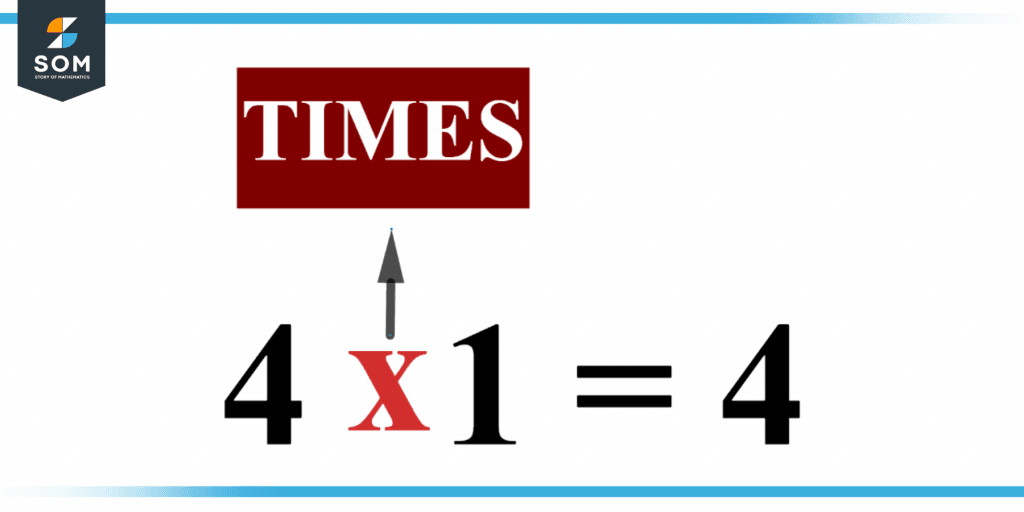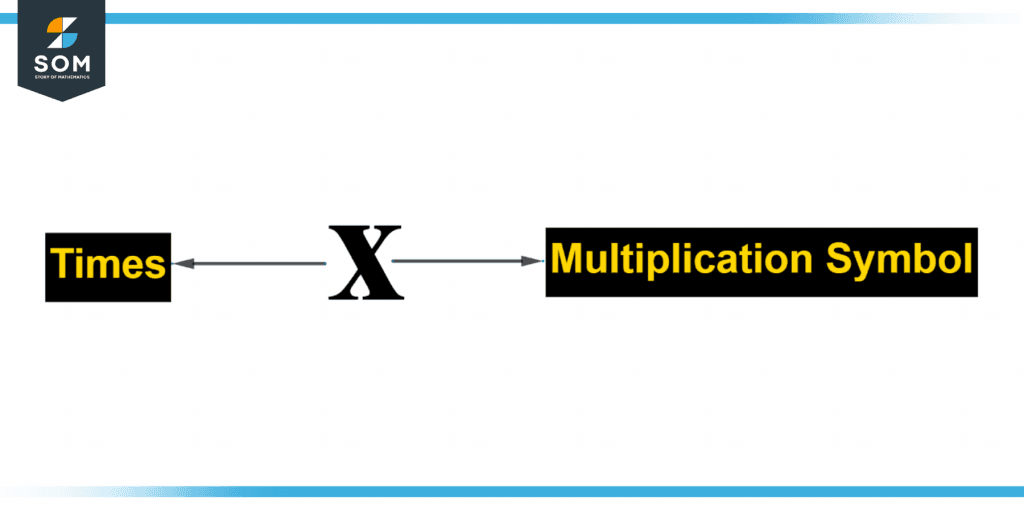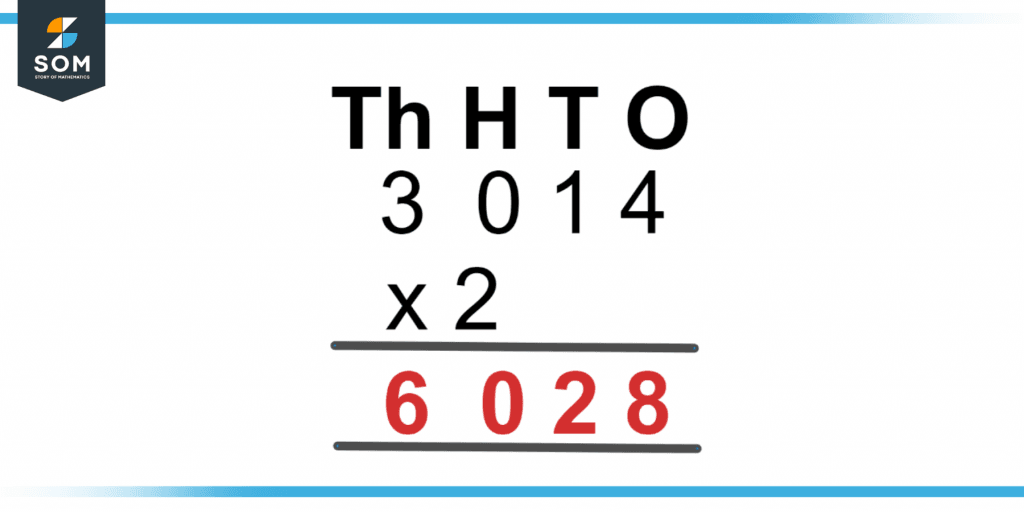JUMP TO TOPIC
Times|Definition & Meaning
Definition
Times represents the mathematical operation of multiplication of numbers and is just another name for the operation. For example, the product of 3 and 7 is also termed as “3 times 7”.
It is a basic mathematical process that is often utilized in everyday life. We utilize times when we require merging groups of the same size.
We use times as the other word for multiply. Such as two times two is 4. The multiplying sign, alternatively known as that of the times symbol or even the dimensions sign, is a mathematical symbol that represents the multiplications and their output.
Figure 1 below shows an example of times.

Figure 1 – Representation of times.
What Exactly Is Multiplication?
Multiplication is a mathematical operation that embodies the fundamental concept of typically characterized by the same integer.
The multiplied numbers are known as the factors, and the outcome of the multiplication of 2 or more numbers is regarded as the product among these numbers. Times is employed to make repetitive adding of the exact number easier.
Times as a Multiplication Symbol
Different symbols are used in mathematics. One of the most frequent math symbols is the multiplication sign. In the preceding example, we learned well about the multiplication of two integers, 6 and 9.
When we look at the multiplication expression (6 x 9 = 54), we observe that the symbol times (x) joins the two integers and completes the supplied statement.
In addition to the cross symbol (x), the playmaker dot operator (.) and the star sign (*) are used to represent multiplication.
Figure 2 below shows the multiplication symbol as times.

Figure 2 – Symbol for times.
Formula for Times
- The multiplicand is the formula for times (times) Product = Multiplier; where:
- The first number is the multiplicand (factor).
- The multiplier is the 2nd number (factor).
- Times: Symbol for multiplication, times that connect the entire formula
- Product: The outcome of multiplying the multiplicand by the multiplier.
How Do You Solve Multiplication Issues?
One-digit integers may be multiplied easily using multiplication tables. However, for bigger numbers, we divide the numbers among columns based on their appropriate place values. These can be 1s, 10s, 100s, 1000s, and so on. Multiplication difficulties are classified into two types:
- Without regrouping, multiply.
- Multiplication followed by regrouping.
Without Regrouping
Multiplying two integers without regrouping creates smaller values that do not require a carry-over to the following higher place value.
It represents the basic level that can assist a learner in comprehending the fundamentals of multiplication before progressing to higher-level issues such as regrouping. Let us look at an example to help us grasp this.
3014 x 2
Step 1: Begin with a digit in the one position. 2 times 4 equals 8.
Step 2: Divide two by the digit in the tens position. 2 times 1 equals 2.
Step 3: Multiply two by the digit in the hundreds position. 2 times 0 equals 0.
Step 4: Multiply two by the digit in the thousands position. 2 times 3 equals 6.
Step 5: 3014 times 2 equals 6028.
Figure 3 below shows multiplication without regrouping.

Figure 3 – Representation of multiplication without regrouping.
Multiplication Assisted by Regrouping
Multiplying more than two digits with regrouping results in a 2-digit product. We must carry the result to the next larger place value in this multiplication.
2468 x 8
First, let us multiply 2468 8 using the methods below and see if we can link it to the figures provided after the stages.
Step 1: Begin with the numeral in the position of the one. For example, eight times 8 = 64, which equals 6 in the 10s column and 4 1s column. Carry 6 towards the tens column now.
Step 2: Multiplying eight by the digit inside the tens slot to get 48. This will now be added to the carry-over. This indicates that 48 + 6 (carry-over from step 1) equals 54. Transfer 5 to that same 100s column.
Step 3: Multiplying eight by the number in the 100s place for a total of 32. Let us now combine this with the bring from the previous phase. This equals 32 + 5 (hold from stage 2) = 37. We shall carry the 3 to thousands section once more.
Step 4: Multiplying eight by the number in the 1000s location for a total of 16. So, adding this into the carry-over, we get 16 Plus 3 (carry-over after step 3) = 19
Step 5: As a result, 2468 times 8 = 19744.
Using a Number Line for Multiplication
Multiplying a number line means performing multiplication on a specified set of integers using a number line. A number line is a straight-line visual representation of numbers.
We all know that multiplying is sometimes referred to as repeated addition. To conduct multiplying on either a line segment, we begin at zero and work our way to the correct hand of something like the line segment for such a specified number of times.
Example of Times
There are 245 fruits in a box. Using the times formula, figure out the number of fruits in four boxes.
Solution
The simplest technique to tackle such multiplication math problems is to write down the supplied parameters and afterward solve them.
Given that:
245 fruits are contained in one package.
The amount of boxes equals four.
The total quantity of fruits in four such boxes is 245 multiplied by four.
Step 1: Begin with the number in the one position. 4 times 5 equals 20. Next, carry 2 towards the 10s column.
Step 2: Multiplying 4 by the number in the tens position, resulting in 4 x 4 = 16. Now, add this to the previous step’s carry-over. 16 + 2 (continuation from step 1) equals 18. Carrying 1 to 100s column from here.
Step 3: Multiplying 4 by the digit in the location of the hundreds to get 8. 8 + 1 (continuation from step 2) equals 9.
Step 4: As a result, 245 times 4 Equals 980.
All Images are made using GeoGebra.
